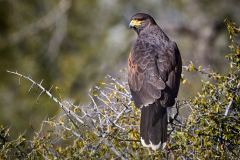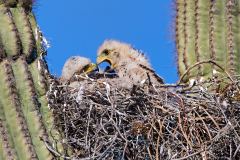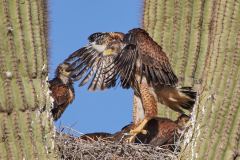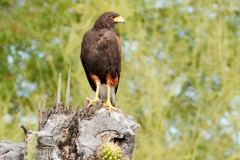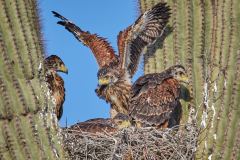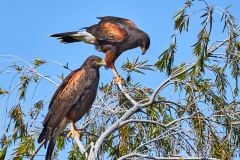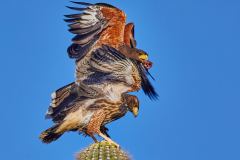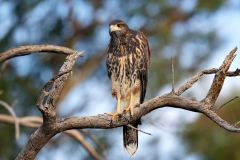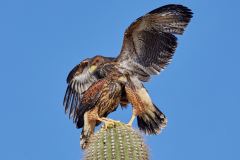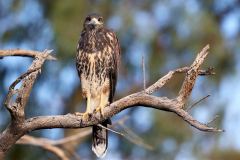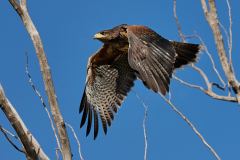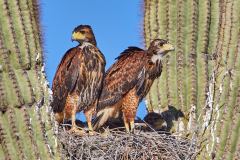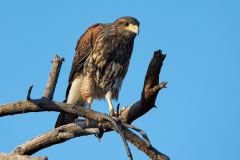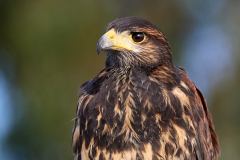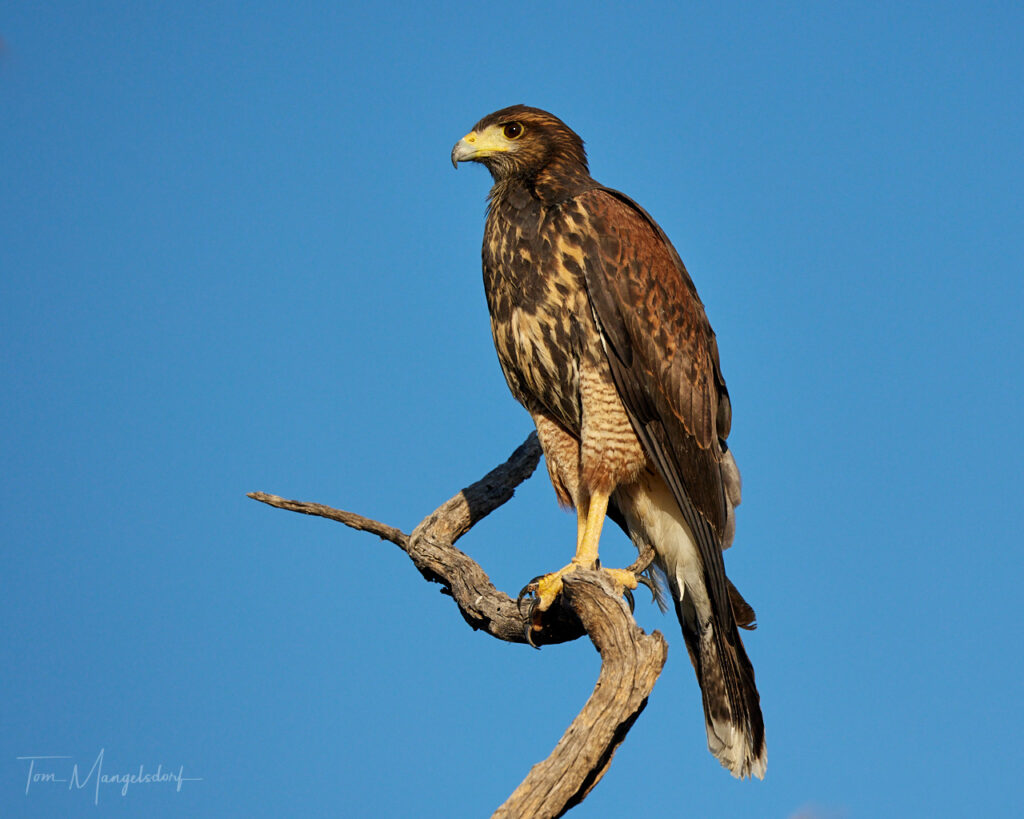
Harris’s Hawks can frequently be seen riding the thermals in the skies above the southwestern United States including most of Maricopa County, southern Arizona, Texas, Mexico and into South America. They’ve been dubbed “Wolves of the Sky” for their hunting behavior which involves several hawks joining into a “pack” to search for, flush out and eventually nab their prey.
Like many birds of the southwest, Harris’s Hawks typically build their nests in Saguaros. However given their size, they use the arms of the cactus (instead of bored holes) to construct their home with branches, twigs and other bits of scrap they find in the desert.
Once the nest is complete the female will lay between 1-5 eggs which hatch in 4- 5 weeks. Parents often form a trio of caregivers for raising their youngsters with two males and the female sharing nesting and feeding duties. After the brood has fledged, the fledglings will hang around with their parents for a few months before becoming fully independent.
Harris’s Hawks have some fun facts associated with them:
- They sometimes perform what is known as “back-standing” where 2 up to 5 birds will stand on one another’s backs. Although it’s a mystery as to why they do this, some experts have suggested that the top hawk on the totem pole will be able to see distant objects better than his lower-level partners.
- Harris’s Hawks are also highly adaptable for use in falconry. They seem to bond easily with their handlers and quickly become adept at the sport. Oddly enough, Harris’s Hawks are one of the most popular birds for falconers in the United Kingdom despite being native to the western hemisphere.
- In fact, there’s one particular Harris’s Hawk named “Rufus” whose falconry skills have made him the official “Bird Scarer” at Britain’s Wimbledon tennis facility. He has been keeping the pesky pigeons away from the courts for over 15 years. He’s got his own ID name tag and has become something of a celebrity. The beer brewer Stella Artois even featured him in several of their commercials which they’ve shown during the Wimbledon tournaments.
The following photographs show these handsome birds ranging from nestlings, to juveniles to adults. Click on any of them to display the larger versions.
